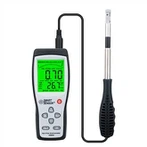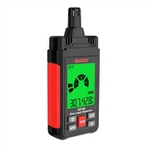How to efficiently utilize the five major tools to achieve measurement of digital multimeters
1. Basic configuration and calibration
When developing an automated testing system, users must first ensure that the hardware in the system is properly recognized, functionally intact, and professionally calibrated before starting system development.
Like other NI hardware, NI DMM includes the Measurement&Automation Explorer (MAX) to help you complete these basic configuration tasks. In this way, users can identify all multimeters, switches, and other various measuring instruments in the same window; Equipment can also be tested and reset when necessary; You can also view device related help documents and wiring documents.
2. Interactive control and debugging
Another important step in developing automated testing systems is the initial testing and debugging of signal connections. During this period, users can perform simple measurements to ensure that all instruments are properly connected, functioning properly, and the measurement results are accurate. NI provides an independent application software for this - Soft Front Panel (SFP), which can help users perform interactive hardware monitoring and control more easily. The software front panels of NI-SWITCH and NI-DMM are shown in Figure 3.
3. Automated measurement and switch switching
After the user completes the connection of various components of the automated testing system and passes the necessary measurement verification, the next step is to implement automated measurement through programming. When using traditional development methods, testing developers may need several days or even weeks to complete this task; But using NI DMS/Switch Express VI in LabVIEW allows users to complete automated measurement and switch tasks in just a few minutes. Users can select the corresponding DMM device here and set all standard measurement parameters.
4. Complete hardware control
Although NI-DMM/Switch Express VI can meet the needs of most automated testing systems, sometimes users may need to control the configuration and execution of testing hardware at a lower level. It can be implemented using the application programming interfaces (APIs) of each instrument, such as NI-DMM or NI-SWITCH. In order to help users become more familiar with and use the functions of these API functions, all NI hardware comes with pre written example programs to demonstrate the features and implementation of the relevant API functions. Only a small portion of the NI-DMM API examples in the LabVIEW example finder are shown in Figure 8.
5. Testing system management
Finally, as the size and complexity of automated testing systems continue to increase, higher-level testing configuration and management tools become crucial for the system. High channel systems using multiple switch modules are particularly difficult to program, maintain, and debug. To make this simpler and more reproducible, it is recommended that users use NI Switch Executive to configure and manage the switch system. Figure 9 shows a configuration example of multiple switch modules connected to multiple instruments and multiple devices under test (DUT).






